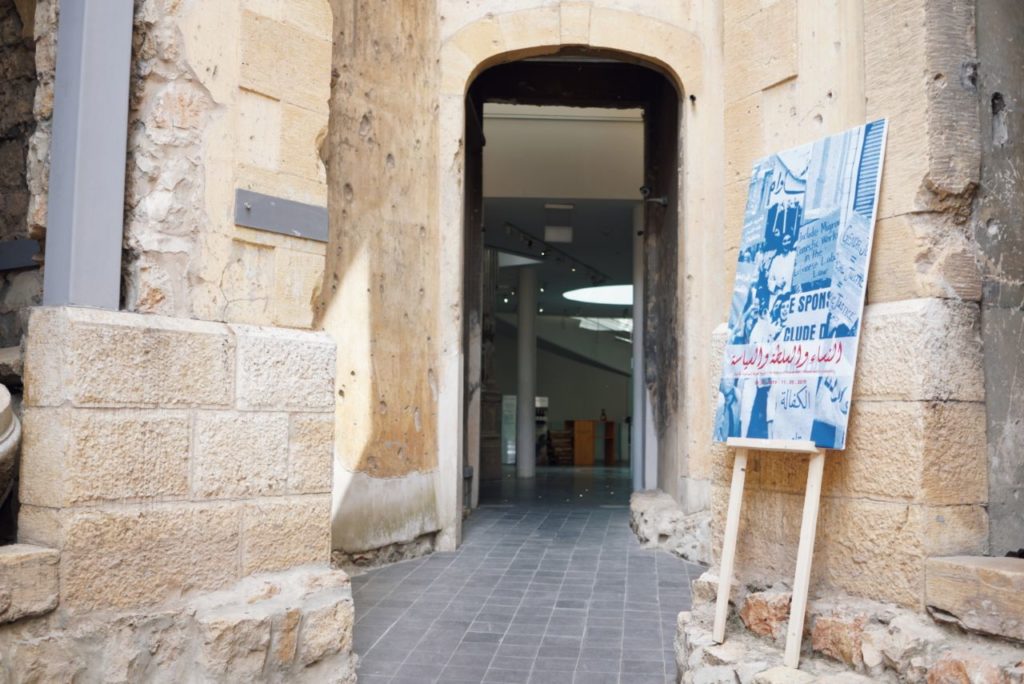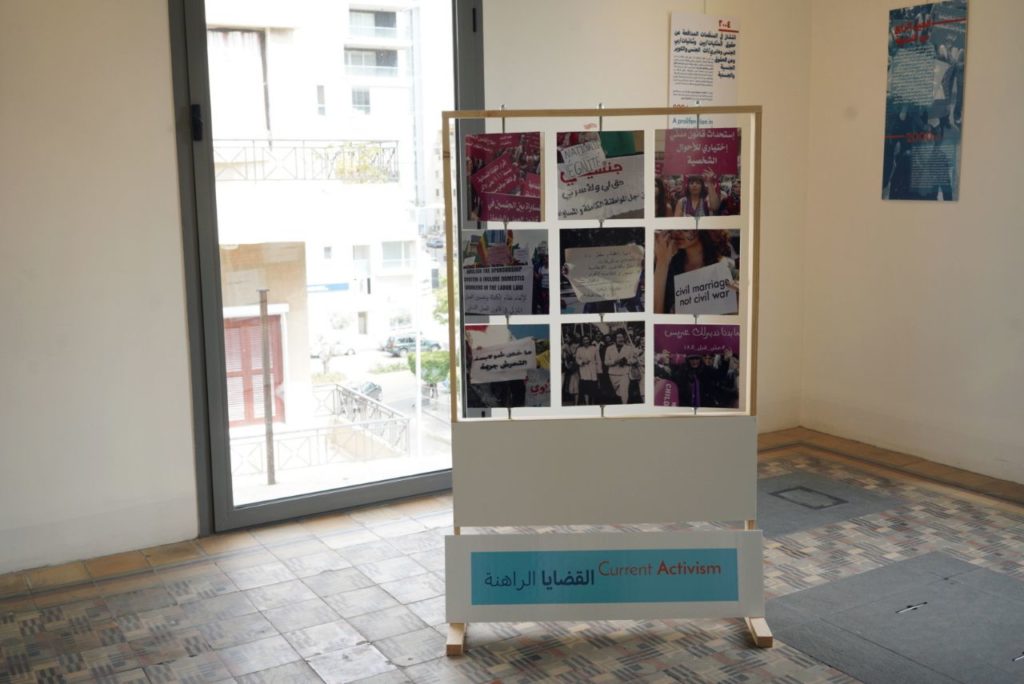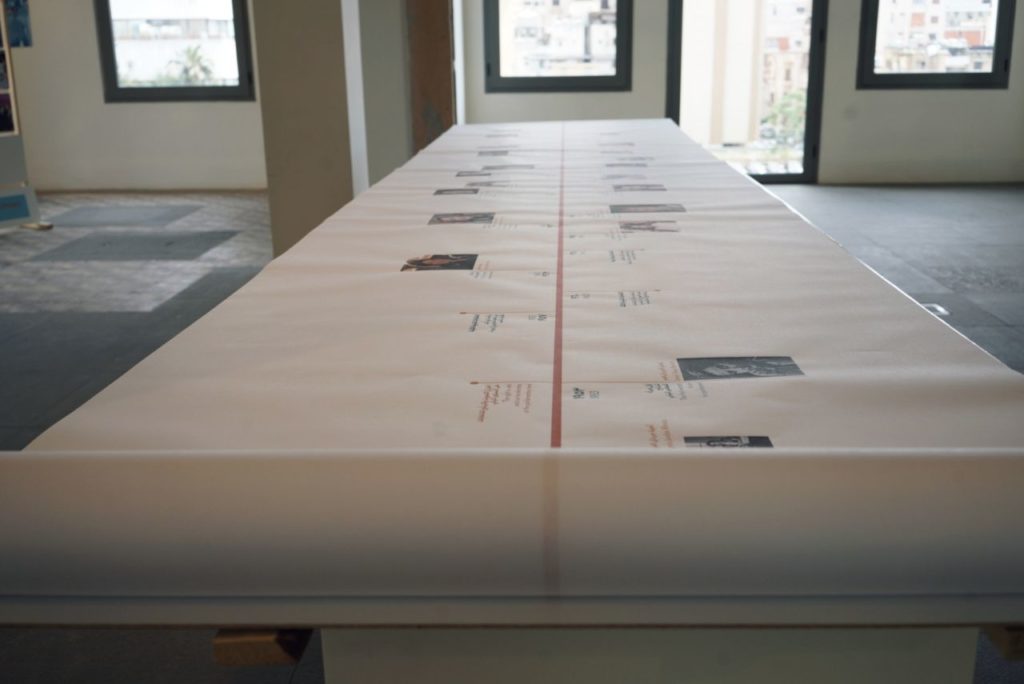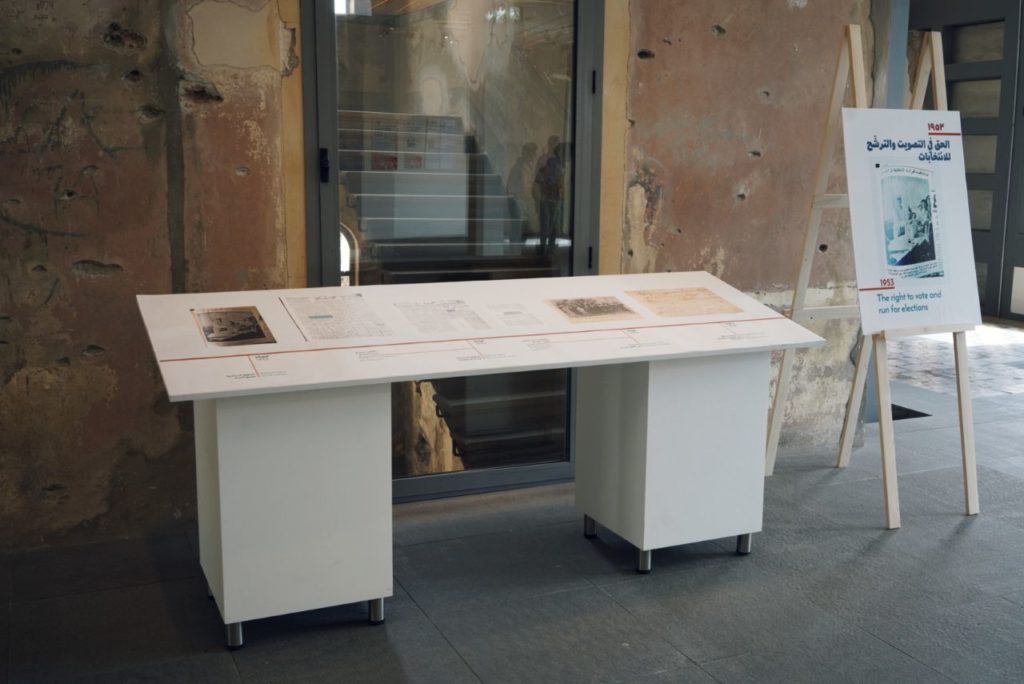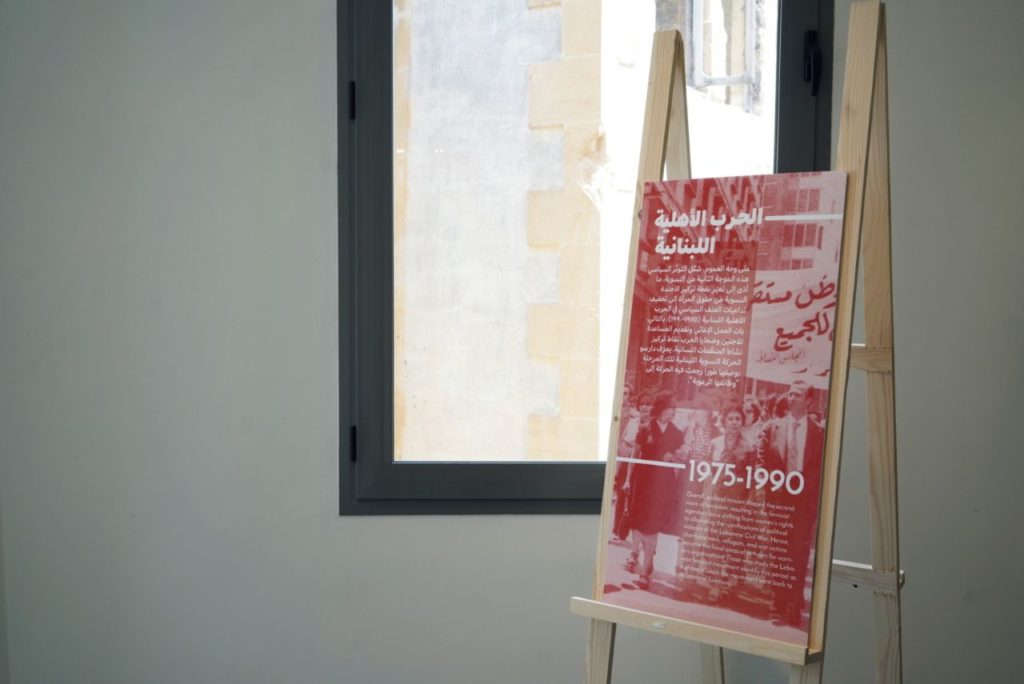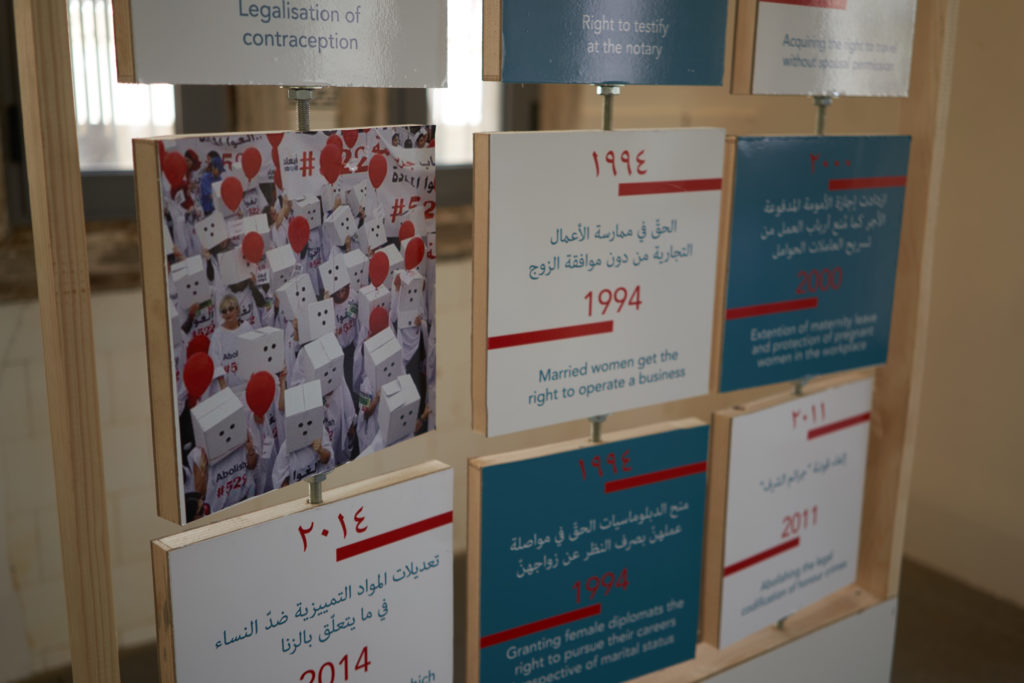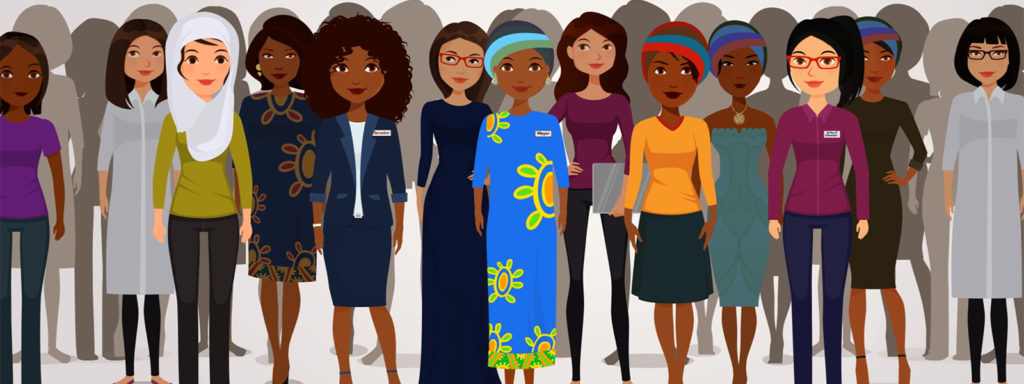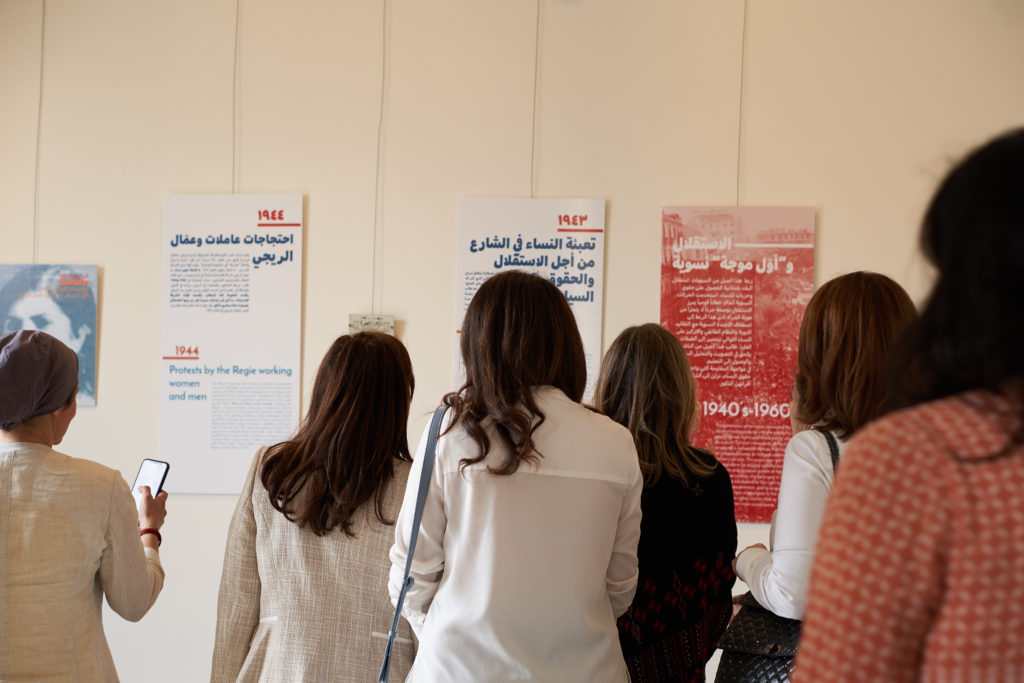
Hivos timeline honours women in Lebanese history and creates new leaders
By Laudy Issa
The new open-access timeline from Hivos’ Women Empowered for Leadership program highlights key females and moments in the history of the women’s movement in Lebanon since 1906.
Created in partnership between Hivos, Lebanon Support and URIKA Agency, the timeline was launched under the patronage of the National Commission for Lebanese Women (NCLW) on May 9 through a three-day exhibition curated by Myra el-Mir, Janine Khawand, and Sam Hrway at Beit Beirut.
By documenting the historical political, legal, and cultural firsts and victories that women in Lebanon experienced, the WE4L timeline provides a solid framework that helps both current female leaders and future leaders.
“This year, we have six women elected into parliament and four women appointed as ministers, with the first female minister of interior in the MENA region appointed here in Lebanon, all possible due to the work of the women in 1936 who demanded the right to vote and run in elections,” said Mira Bouchmouny, WE4L’s program coordinator in Lebanon, during her opening speech.
The timeline launch –which received significant press coverage through both English and Arabic news outlets like the Daily Star, Lebanon’s National News Agency, Beirut Today, and the Free Patriotic Movement media outlets– was attended by members of the civil society, everyday citizens interested in women’s rights, and the Dutch Ambassador in Beirut.
“Countries where women have almost equal rights or equal rights are happier and more prosperous than other countries, so there’s a lot to be gained for Lebanon.”
“It shows us in history what has been done to improve the situation of women and their involvement and also that there’s still a way to go to ensure that eventually women will have equal rights to men,” said Jan Waltmans, the Dutch ambassador. “Countries where women have almost equal rights or equal rights are happier and more prosperous than other countries, so there’s a lot to be gained for Lebanon.”
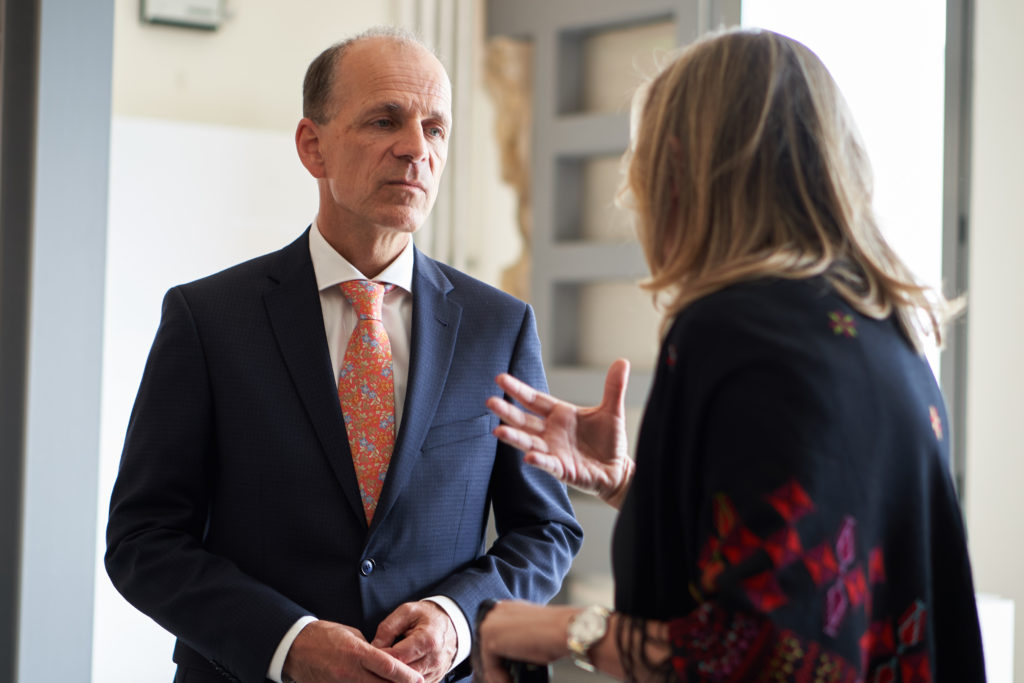
The timeline is open to contributions from the public, with Hivos encouraging readers and researchers to share the events, figures and sources they deem significant to the women’s movement in Lebanon. The data has also been made available in both English and Arabic.
The timeline provides well-organized, easily-accessible data that took two years to gather in the hopes of both honouring the women who furthered the feminist movement to where it is and inspiring an upcoming generation of female leaders.
The timeline provides well-organized, easily-accessible data that took two years to gather in the hopes of both honouring the women who furthered the feminist movement to where it is and inspiring an upcoming generation of female leaders.
“The purpose of this exhibition, which frames women’s rights and participation in decision-making processes in Lebanon through a historical lens, is to strengthen the will and determination of young generations to achieve the goals that our generation aspires for, to achieve gender equality and the effective participation of women in leadership and decision-making,” said Claudine Aoun Roukoz, the president of the NCLW.
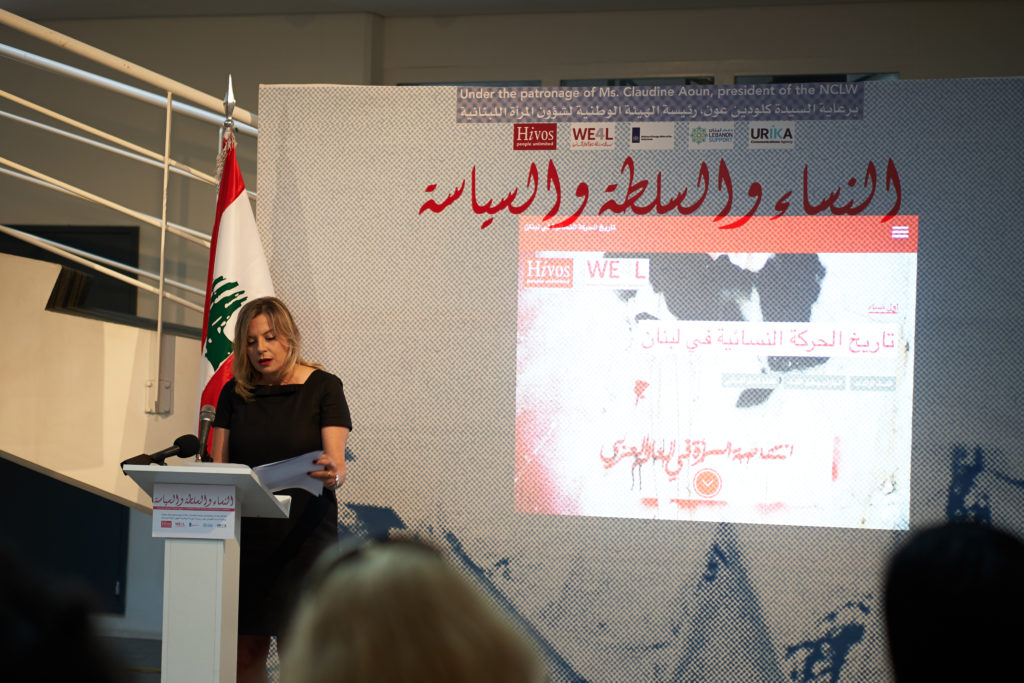
NCLW President Claudine Aoun Roukoz gives her speech at the timeline launch. (Photo: Laudy Issa)


